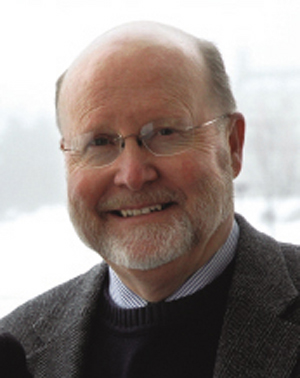
Tom's History
 Following graduation in 1964 Tom accepted a Fulbright Fellowship to the Philippines. Returning to the U. S. the following year, he married his hometown sweetheart Gretchen and they moved to Washington where he served as a staff officer in the Pentagon, working with 1964 USAFA classmates Steve Mayo and John Quigley. In 1968 he resigned his commission to pursue a PhD in economics from the University of Wisconsin. Daughter Heidi was born in Madison.
Following graduation in 1964 Tom accepted a Fulbright Fellowship to the Philippines. Returning to the U. S. the following year, he married his hometown sweetheart Gretchen and they moved to Washington where he served as a staff officer in the Pentagon, working with 1964 USAFA classmates Steve Mayo and John Quigley. In 1968 he resigned his commission to pursue a PhD in economics from the University of Wisconsin. Daughter Heidi was born in Madison.
It was a tumultuous time on the Madison campus, including the bombing of the Army Math Research Center by some local radicals. Traveling to his office frequently meant navigating around National Guard troops controlling crowds with fixed bayonets. On some afternoons dissertation writing was rendered impossible by incapacitating concentrations of tear gas.
Finishing his PhD in 1971 Tom accepted a teaching position at Williams College in Massachusetts. Son Eric was born in Williamstown in 1974. In 1975 Tom joined fellow Academy graduates Bart Holiday and Bill Hogan in the newly formed Federal Energy Administration, which had been established to craft a new energy policy in the wake of the OPEC oil embargo.
In 1977 Tom moved to Colby College in Maine, which, not so coincidentally, was located near the town where Gretchen's parents then lived. In 1990 he became the C. A. Johnson Distinguished Teaching Professor and in 1993 he was named the Mitchell Family Professor of Economics.
At Colby he intensified his research and publication on a topic first pursued in his dissertation—-the use of economic incentive polices to control pollution more cost effectively. Although in 1971, when he first wrote on cap-and-trade, it was considered an academic exercise with little practical application, by the mid-1970s it was beginning to make its appearance in policies controlling conventional air pollutants.
In 1988 Tom was asked to contribute a chapter to Project 88, a report sponsored by Senators Wirth and Heinz that was designed to help the administration craft more cost effective polices to control pollution. His chapter proposed using this market-based system to control acid rain. In 1990 the administration did indeed craft a cap-and-trade policy, called the sulfur allowance program, to control sulfur dioxide emissions from the utilities sector.
Following the success of the sulfur allowance program Tom led an international United Nations team that was tasked with providing the analytical foundation for the design of a similar system to control the greenhouse gases responsible for climate change. He has continued to be active in the design and evaluation of cap-and-trade systems in the U. S. and Europe, most recently though his 2009-2010 participation in the National Academy of Sciences' project “America's Climate Choices”.
In 1985-6 Tom's colleagues elected him President of the Association of Environmental and Resource Economists (AERE) and in 2006 named him to its first class of AERE Fellows. In 2010 Tom received the "Outstanding Public Service Award Through Economics" from the Northeastern Agricultural and Resource Economics Association.
Since his retirement from Colby in 2007, Tom has remained active. In 2009 he was appointed by Maine's Governor as a member of the Board of Directors of the Efficiency Maine Trust, an organization that oversees energy efficiency and renewable resource programs within Maine.
Gretchen and Tom celebrated their 42nd wedding anniversary in 2009.
[ Home ] [ Table Of Contents ]